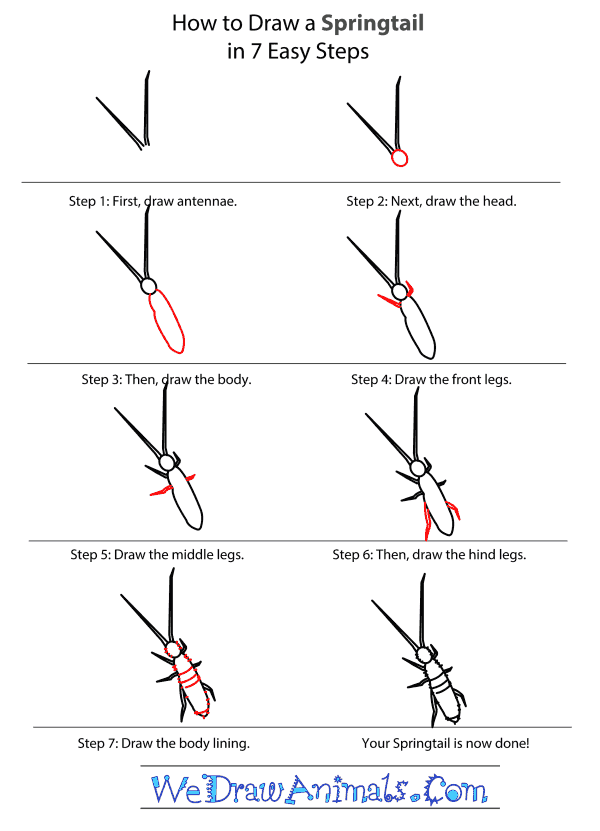In this quick tutorial you'll learn how to draw a Springtail in 7 easy steps - great for kids and novice artists.
The images above represent how your finished drawing is going to look and the steps involved.
Below are the individual steps - you can click on each one for a High Resolution printable PDF version.
At the bottom you can read some interesting facts about the Springtail.
Make sure you also check out any of the hundreds of drawing tutorials grouped by category.
How to Draw a Springtail - Step-by-Step Tutorial
Step 1: First, let's make the antenna of our springtail. Draw the lines in a letter V shape.
Step 2: Next, draw the head. It is a small circle. Some species of springtail are so small, you cannot see them.
Step 3: The body is a long, skinny oval.
Step 4: Draw two skinny front legs on either side of the body just below the head.
Step 5: Then draw the middle legs.
Step 6: Next, draw the back legs. They are longer and are facing the other way.
Step 7: Draw the body lining by adding small cross lines on the head and body lines, as well as band lines across the body itself. You are finished with your springtail! These tiny creatures are dark in color so they can blend in with the forest floor, where they eat leaves after they fall.
Interesting Facts about the Springtail
The Pogonognathellus longicornisis the largest of the springtails found in the UK. The springtail gets its name from a spring-loaded appendage on the underpart of its body. When the springtail is scared or upset, the appendage (called the furcular) can launch the springtail into the air.
Did you know?
- Springtails commonly live in trees and gardens. They feed on algae and lichens in the bark of the tree.
- When the furcular is released, a springtail can jump up to ten centimeters.
- Springtails are the most abundant insect in the world.
- The springtail has two antennae that, when straight, are twice as long as its body. When the springtail is upset or bothered by something, its antennae curl up and appear much shorter.
- Unlike many insects, springtails do not undergo a complete metamorphosis during their life cycle. Instead, they molt (shed their skin) multiple times so they can grow.
Lesson plan note: Using a picture of a springtail, examine the furcular and discuss how it would need to work in order to make a springtail jump. If possible, use an actual spring to illustrate and discuss how this ability would help the springtail in its environment.








